It’s no secret that reptiles are an interesting topic of conversation. A few biology experts have compiled a list of the largest reptiles in the world to help you get to know these fascinating creatures better. From saltwater crocodiles and alligators to freshwater crocodiles and gharials, hopefully, this article will be your go-to for all things reptile-related! Recently we compared reptiles and amphibians, and wrote a research why your bearded dragon is waving.
The Largest Snake
Green anaconda
Weighing around 550 pounds, the green anaconda is the largest snake in the world. It can grow to be at least 12 feet long but may reach up to 30 feet if left undisturbed and unharmed. They are muscular, meaning they have strong bodies with defined bellies that taper off into their tails.
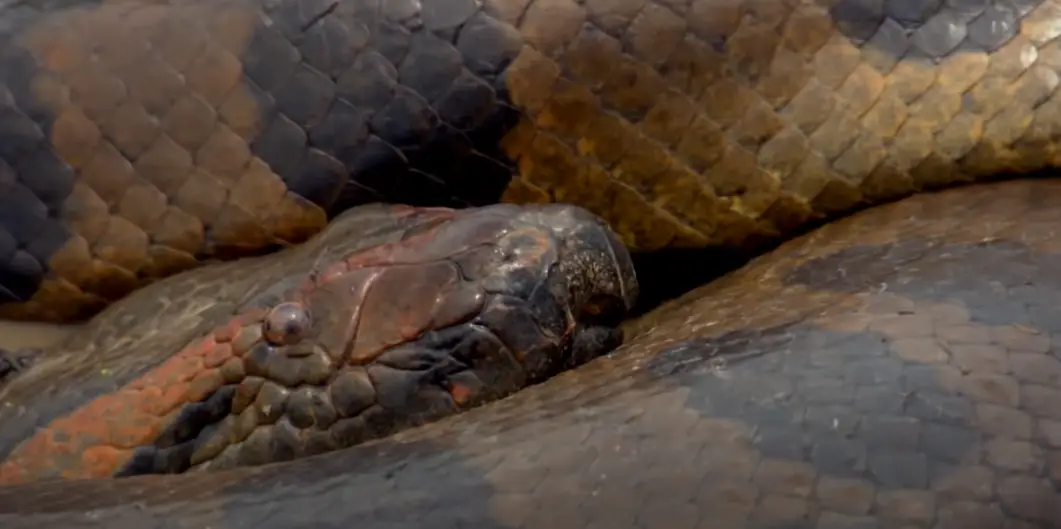
Their jawline often has a very pronounced gape where it almost looks like there’s no way for them to close their mouths all of the ways because their lower jaws protrude so far outwards when their mouth opens wide enough.
Green anacondas also have incredibly sharp teeth which help them grip onto prey while constricting it until it suffocates or bleeds out from its wounds. They are primarily found in South America and they eat a variety of different animals.
The Largest Lizard
Komodo dragon
The Komodo dragon is the largest lizard in the world. It can grow to be about 11 feet long and weigh up to 150 pounds but may reach even larger sizes if left undisturbed for a longer period. These lizards are strong creatures with powerful jaws that contain sharp teeth so they can rip apart their prey after killing it by constriction or other means.
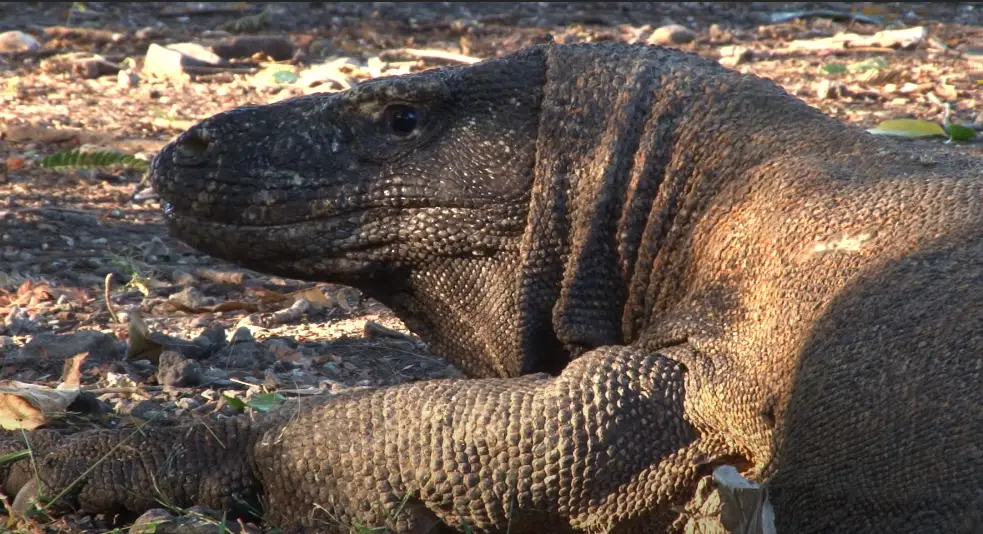
They also have incredibly fast reflexes that allow them to quickly subdue or evade potential threats when needed as well as run at high speeds over short distances. The Komodo dragon primarily lives on islands found throughout Indonesia where its diet consists mainly of deer, boar, fish, birds, and carrion (dead animals).
Many people think that snakes like anacondas and komodo dragons are the deadliest of all reptiles, but this reptile can actually kill humans with a single bite.
The Largest Tortoise
Galapagos tortoise
The Galapagos tortoise is the largest of all living turtles and tortoises. They can grow to be at least 4 feet long and weighing around 450 pounds. These creatures are strong, durable animals with shells that they sometimes use as shelter when sleeping or relaxing in hot weather conditions.
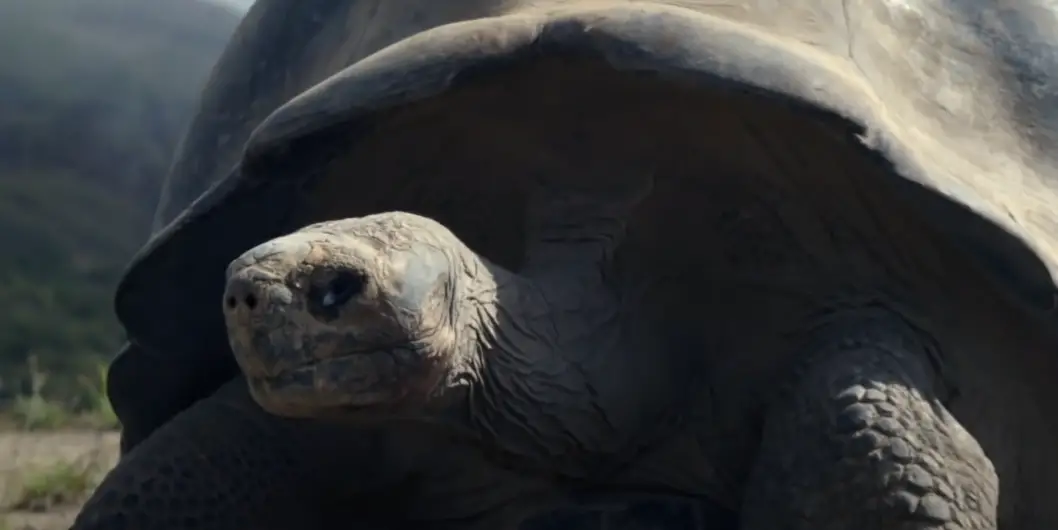
Beyond their massive size, these reptiles also have extremely powerful jaws that contain sharp teeth. They can rip apart plants like cacti (a common source of food) without too much trouble since it takes a lot more effort than what you would think by looking at them.
However, this does not mean that their prey doesn’t suffer before dying because one has bitten into something that won’t move, they will often continue chewing on it until their food is dead. These creatures are mostly found throughout South America and the Galapagos islands where their diet consists mainly of grasses, leaves, flowers, cacti, fruit, etc.
The Largest Turtle
Leatherback turtle
The leatherback turtle is the largest of all living turtles. They are massive creatures that can weigh up to 2000 pounds and grow up to be around 10 feet long. The weight of these reptiles alone makes them very slow, but their shell helps protect them from predators so they have no reason to run away or seek shelter when being chased because it’s much harder for opponents to bite into something with a protective covering like this.
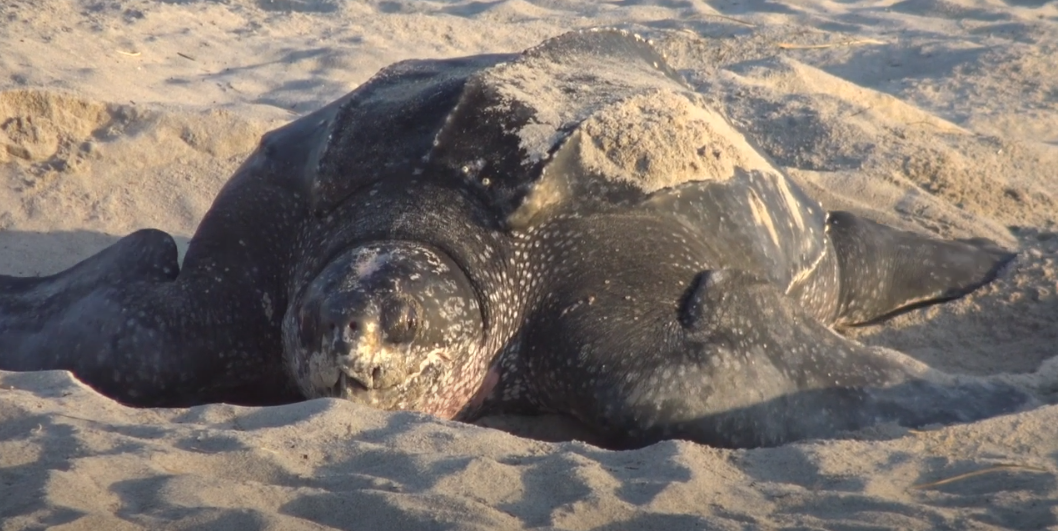
They primarily feed on jellyfish which isn’t easy considering how fast prey items like this move. However, there aren’t many animals capable of harming such an enormous sea creature besides humans who sometimes hunt them down as food sources (although some cultures consider certain body parts medicinal) and orcas/sharks who often hunt them for food.
The Largest Crocodilian
Saltwater crocodile
The saltwater crocodile is the largest of all living crocodilians. They can grow to be about 23 feet long and weigh around 1500 pounds. These creatures are strong, efficient predators that have sharp teeth which allow them to easily bite into prey items like fish, birds, reptiles (like smaller crocodiles), mammals (like pigs or goats), etc.
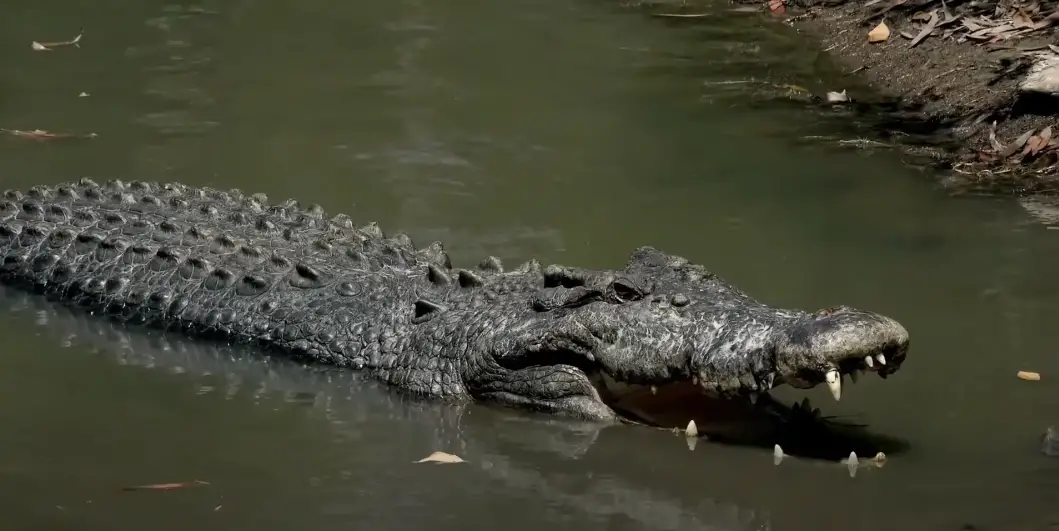
Their jaws also contain muscles for powerful crushing so they can crunch down on bones without too much trouble as well as more than enough strength and flexibility needed to drag large carcasses back into their underwater lairs.
They live throughout South-East Asia and Northern Australia where their diet consists mainly of fish, birds, reptiles (like smaller crocodiles), pigs/goats.
Other Large Reptiles
Reticulated python
The reticulated python is the longest of all living snakes. They can grow to be at least 31 feet long and weigh up to 250 pounds. These creatures are very large, but not as strong or durable as most other reptiles on this list which means that they need a strategy before going into battle against more powerful animals like crocodiles.
However, if it comes down to fighting an opponent with a weaker bite (like a human), then these creatures will likely win due to their massive size alone since even though their teeth aren’t quite sharp enough for predation purposes. They still have plenty of durability/strength behind them in order to deliver lethal bites when hunting prey items like duiker (a small antelope).
These reptiles live throughout Southeast Asia and India where their diet consists mainly of rats, bats, pigs/goats.
Aldabra giant tortoise
The Aldabra giant tortoise is the largest of all living tortoises. They can grow to be nearly 6 feet long and weigh around 550 pounds. Unlike other species on this list, these creatures are herbivores that feed off of grasses, leaves, flowers like cacti (a common source of food), fruit.
However, they must often compete with large mammals for access to much-needed nutrients which means there’s always a chance they will lose out if their opponents have stronger jaws capable of hunting them down as prey items.
These animals live throughout Seychelles where their diet consists mainly of grasses/leaves/flowers/fruit etc., but also sometimes includes small rodents or insects when meat sources are scarce.
Slender-snouted crocodile
The slender-snouted crocodile is the second largest of all living crocodilians. They can grow to be nearly 13 feet long and weigh up to 500 pounds. Although their bite isn’t quite as powerful or durable as most other species on this list, they have one major advantage over them in that they are more agile swimmers so it’s easier for these creatures to catch prey items like fish, birds, small reptiles (like smaller crocodiles), mammals (like pigs/goats) during water hunts.
However, if an opponent with a stronger bite comes after them while out catching food then there may not be much hope left since even though these animals are tough enough to defend themselves from predators capable of hunting them down as prey items, a stronger bite can often overpower them due to their lack of durability.
These animals live throughout Africa and the Nile River where their diet consists mainly of fish, birds, small reptiles (like smaller crocodiles), mammals (like pigs/goats).
Burmese python
Burmese Pythons (Python molurus bivittatus) are one of the larger subspecies of the Indian python, growing to lengths of 22.8 feet on average and attaining a mass of 99 pounds.
Burmese pythons are native to Southern Asia. They prefer wetlands, grasslands, and rocky terrain. As the python grows it will continue to eat almost any type of warm-blooded animal that it can overpower and fit into its mouth: birds, mammals, and even other smaller reptiles such as lizards. Dying through constriction kills prey by suffocation, biting down with their strong jaws until their prey no longer breath or blood flow is cut off through vascular constriction.
Burmese pythons are solitary animals. They usually only interact with other pythons to mate, however they have been known to form small groups while hunting or basking in the sun.
Burmese pythons eat large amounts of food, which they digest slowly. They can survive months without eating.
These reptiles are efficient predators who ambush prey from the ground or in low vegetation. However, they have even been known to climb trees in order to find nesting birds and eggs in nests in trees.
Green sea turtle
The Green Sea Turtle has a shell length range of 0.91 to nearly 3 feet. Females are larger than males and can weigh more than 200 pounds. The Green Sea Turtle is herbivorous and feeds on seagrass. They are found in the waters surrounding Australia, Africa, Madagascar, the Red Sea, and the Indian Ocean.
Loggerhead sea turtle
The loggerhead sea turtle is the largest reptile in North America, but it can also be found in one other location across the world. They are quite large and have an average weight of 250 pounds. These turtles usually eat jellyfish, squid, crabs, clams, and mollusks when they’re adults. The eggs that these reptiles lay are around 100 to 200 at a time with both sexes being able to reproduce for their entire lives.
False gharial
The False Gharial, Tomistoma schlegelii, is a crocodile native to Southeast Asia that eats fish. It can grow up to 23 feet long and weigh as much as 700 pounds. Their diet consists mostly of fish and sometimes water birds. Females are generally larger than males, but both have a large gharial-like snout that is used to catch prey.
Mugger crocodile
A mugger crocodile is a type of freshwater crocodile. It can be found in India and Sri Lanka. The largest known mugger was 19 feet long! Muggers are mostly fish eaters but also enjoy other large animals such as deer, pigs, and even tigers when they come to the river bank to drink. A typical adult will weigh around 441 lb.
American alligator
The American alligator is the largest reptile in North America. They are found primarily in Florida but have also been spotted as far west as Louisiana and Texas. Their diet mostly consists of fish, turtles, birds, and mammals up to the size of deer. However, they will eat just about anything if it’s easily available. When full-grown adults range from 11-14 feet long weighing on average 500 pounds or more depending on their sex (males are usually larger).
American crocodile
The American crocodile is the largest of 23 species in the world and can live up to 75 years. Originally found throughout Central America, this reptile lives within freshwater and saltwater habitats. They are strong swimmers that average 12 feet long weighing around 550 pounds with a life expectancy of up to 60-70 years or more!
Black caiman
The Black Caiman is a large crocodilian that lives in the tropical rainforests of South America. It can grow up to 11 feet long and weigh as much as 400 pounds! Despite its name, this animal’s scales are not black but dark brown with yellowish stripes. They specialize in hunting caiman and turtles but also prey on rodents, birds, crabs, frogs, and fish.
The Black Caiman will eat almost anything it can catch because food is so scarce living deep within the rainforest. They are aggressive animals that have been known to attack humans if they feel threatened or provoked. This species of crocodile has even been seen attacking jaguars! Surprisingly this crocodilian does not spend much time in water except during mating season when males need to be near a body of water full of females ready for reproduction. The average lifespan of a male black caiman is about 50 years.
Orinoco crocodile
The Orinoco crocodile is the largest crocodilian in South America. There are few remaining wild populations of this species, but it appears to be making a comeback. This croc can grow up to 20 feet long and weigh over half a ton!
Nile crocodile
The Nile crocodile is considered one of the largest of all living reptiles. They are found in Sub-Saharan Africa and have been known to grow up to 20 feet long, weighing nearly 1 ton. The species is particularly aggressive with a diet that consists mainly of large mammals such as wildebeest or even humans when they can catch them.
FAQ
What are the top 10 largest reptiles in the world?
The largest reptiles in the world can include crocodiles, alligators, and certain snakes. Listed below are ten of the largest known specimens to have existed on Earth so far:
- The saltwater crocodile is a large reptile found widely across Australia as well as parts of Southeast Asia including Indonesia, East Timor, and Papua New Guinea. This species has been primarily hunted for its skins but it remains an apex predator because it preys on animals – birds, fish, sharks, other reptiles. They also prey on domesticated livestock that makes them unpopular among humans who mostly fear being attacked by this animal although they normally avoid human contact when possible. There have been only a few human fatalities documented in the past 100 years. They are considered to be responsible for over 400 deaths annually but scientists have found that this statistic is largely overestimated and likely includes attacks by other species including smaller crocodiles;
- The American alligator which is native throughout the southeast of North America has a much broader snout than its cousin, the saltwater crocodile. It lives in freshwater environments such as marshes, lakes, swamps, and along rivers where it preys upon fish, turtles, birds, small mammals, insects, snakes, amphibians, sometimes larger prey like deer. There have been cases when these animals attack people who enter their territory or come too close to their nests especially young children although most adult humans can easily run them if necessary because they are much smaller than their adult counterparts;
- The Indian or Burmese python is the largest subspecies of the Asiatic reticulated python, an extremely large nonvenomous snake found in many parts of Asia including Bangladesh, Bhutan, India, Indonesia, Malaysia Myanmar Nepal, and Thailand. They are one of the three heaviest snakes on earth with a length up to 33 feet (about 11 meters), although 25 feet is more common. Their unusual size allows them to prey upon pigs, antelopes, larger reptiles and even occasionally small elephants which have been killed by this species. Sometimes humans are also victims if they encounter these animals unprepared as these pythons can kill adults even though they usually go for much smaller preys;
- The Green Anaconda is a large, nonvenomous boa species found in the tropics of South America. These snakes are very powerful swimmers and can grow to be up to 29 feet long making them the world’s longest reptiles, although they usually don’t get this big due to their natural environment being constantly under attack by other animals including jaguars which eat these pythons whenever possible. They feed on any animal that comes across their path like deer tapirs, caimans, capybaras turtles etcetera but also sometimes larger prey such as wild pigs, jaguars even humans when given the chance. While most human attacks end without incident if caught off guard some victims have been reported to die due to suffocation because these snakes will coil around their prey and squeeze them so tightly that the victim cannot breathe;
Other 6 places of the largest reptiles in the world are taken by:
- Nile crocodile;
- Orinoco crocodile;
- Leatherback sea turtle;
- Black caiman;
- Mugger crocodile;
- Galapagos tortoise;
What is the 2nd largest reptile in the world?
The Nile crocodile is found throughout sub-Saharan Africa, parts of the Middle East, and as far east as India. It is an opportunistic feeder, preying upon birds, fish, amphibians, and mammals including wildebeest calves, impalas, and small dogs or cats that come to the water’s edge during the dry season when they are most vulnerable.
Due to habitat loss, it can be very difficult for researchers to estimate population sizes accurately but estimates suggest there may only be between 3000 – 5000 adult animals left in their natural range. At 20 feet long weighing up to 1500 pounds, this African giant has few predators other than the man himself!
Which is bigger – crocodile or Komodo dragon?
Crocodiles are the largest reptiles in the world. They can grow to be over 17 feet long, while Komodo dragons only reach about 11 feet at full size.
However, crocodile bodies usually weigh between 110-550 pounds, whereas adults of the largest living lizard species typically range from 160 pounds.
The Komodo dragon has a slightly longer head and neck than other monitor lizards because it is adapted for digging out prey animals that hide in their burrows or underbrush piles. Crocodiles have much shorter necks, but they also have more tails that are powerful so they can swim underwater to catch fish better.
What is the strongest reptile?
The Komodo dragon. It weighs around 350 pounds and can grow more than ten feet long. The Komodo dragon eats a large range of animals, including deer, pigs, and even smaller dragons!
Who was the largest lizard that ever lived?
The largest lizard that ever lived was a prehistoric marine reptile called the Mosasaurus. The size of this giant predator, which grew to 65 feet long and ate other dinosaurs, has been estimated from fossil evidence found in Europe. And it’s believed their closest living relative is probably an extinct type of monitor lizard that shares some characteristics with crocodiles as well as lizards.
Which is the smallest snake in the world?
The smallest snake in the world is a small non-venomous blindsnake called Leptotyphlops carlae (Barbados thread snake). It lives on an island of Cuba and has only been found through one specimen that was discovered in 2003. It measures only about 8 inches long. The snake is believed to live underground, using its head and tail scales to burrow through soft soil.
What is the smallest sea turtle in the world?
Kemp’s Ridley sea turtle is the smallest sea turtle in the world. They are very rare, and they only live in the Gulf of Mexico. This is because their food source (mostly jellyfish) can be found there. They also aren’t that big themselves either – about 2 feet long at most!

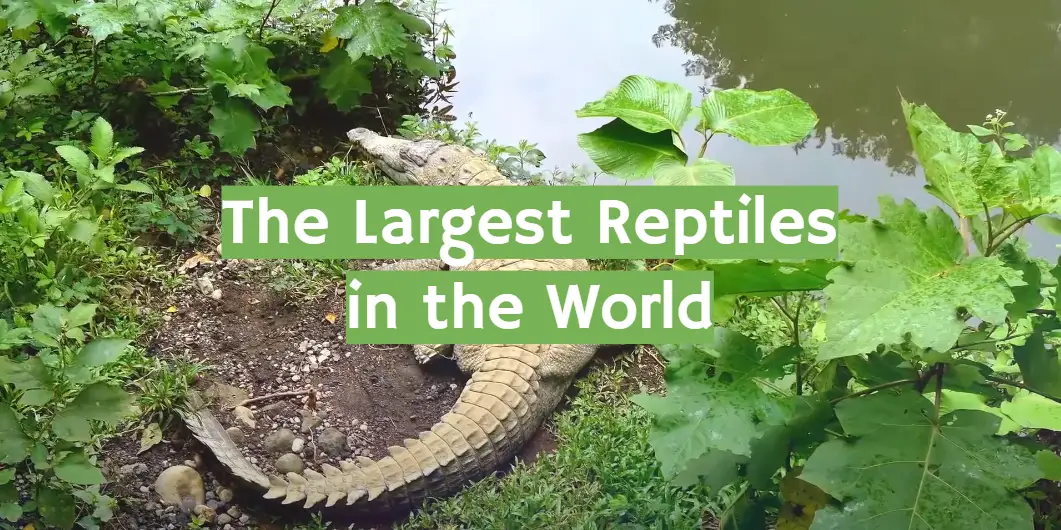




Leave a Review